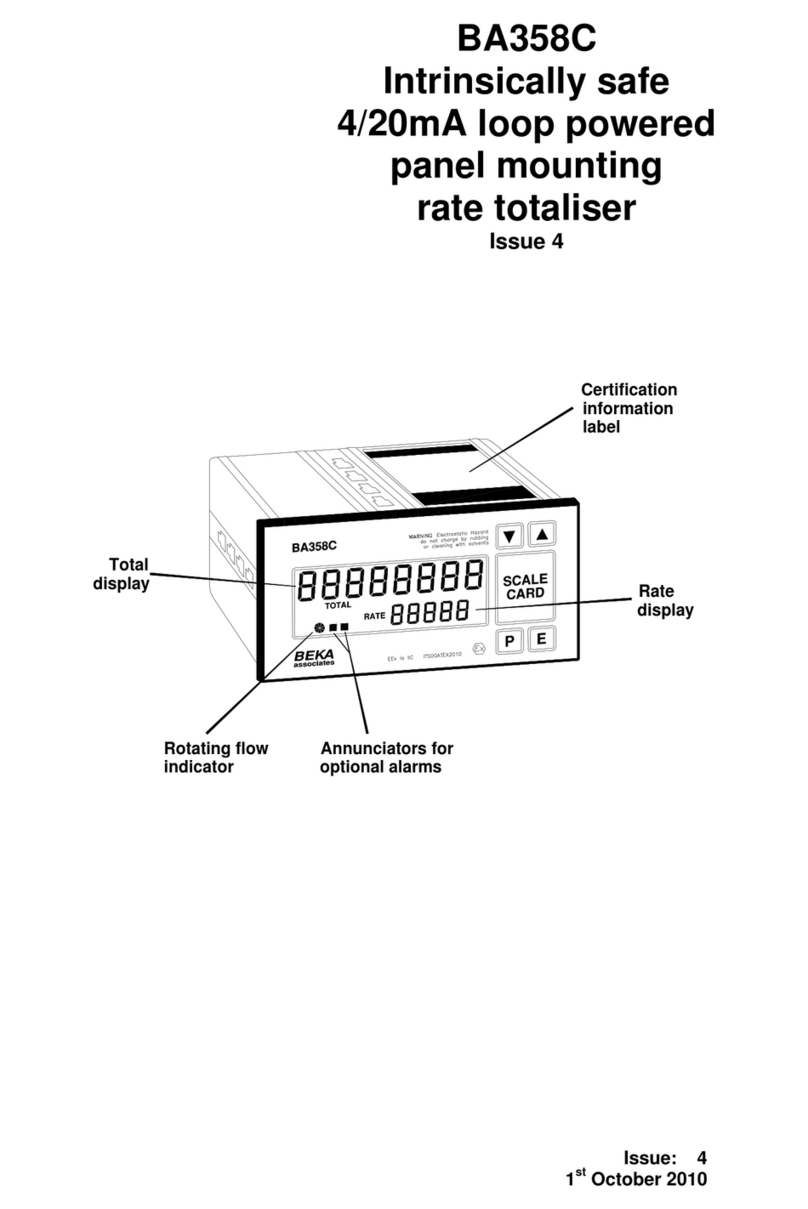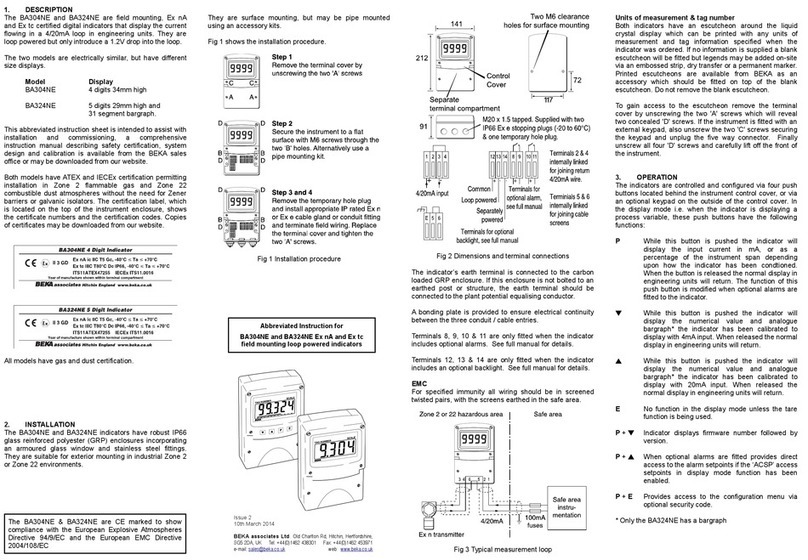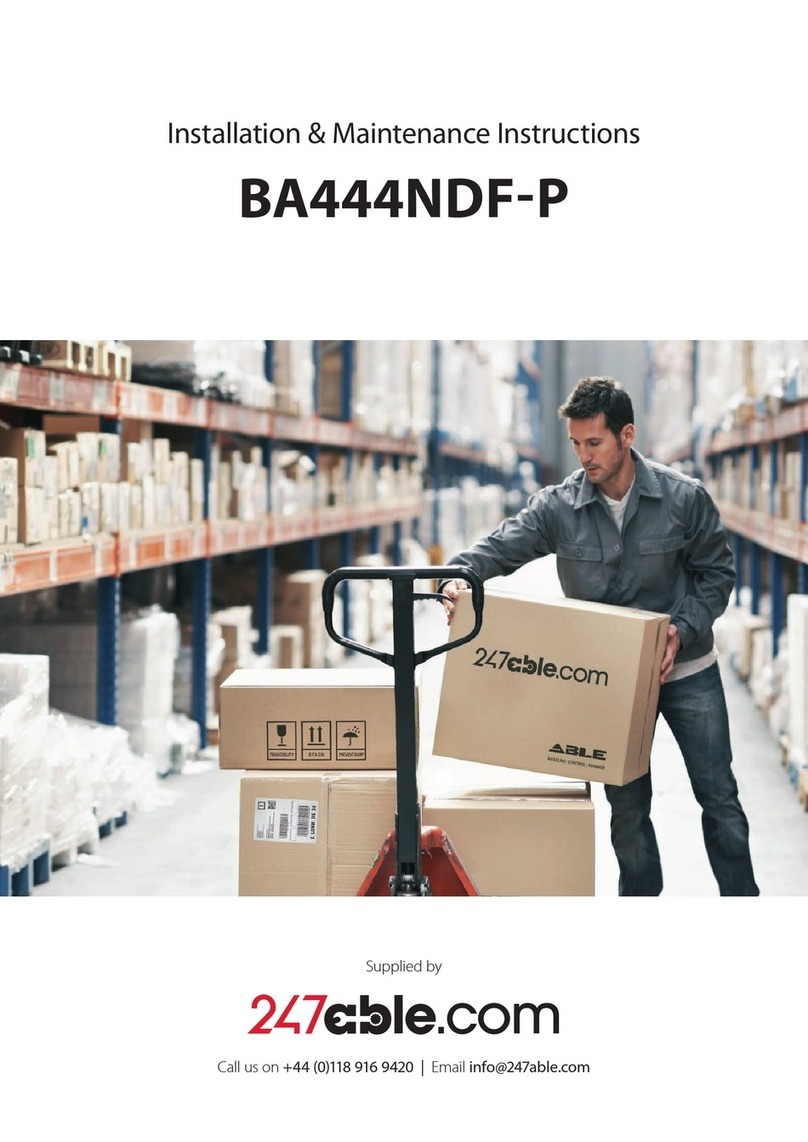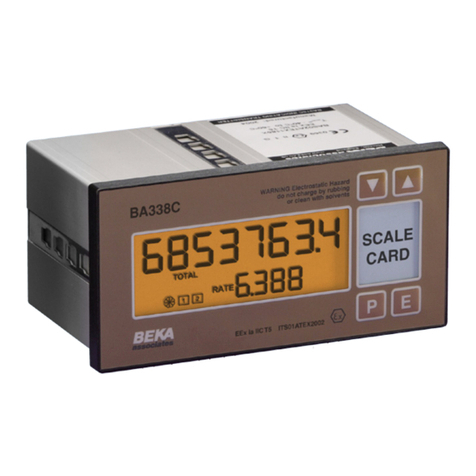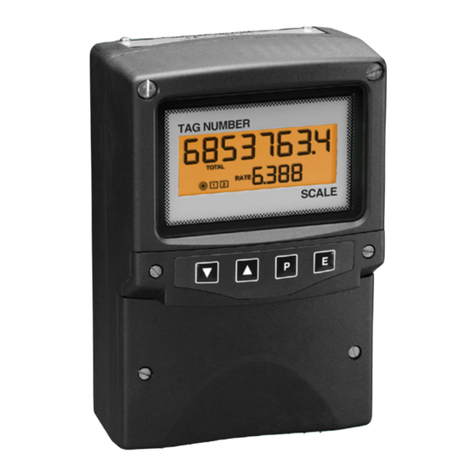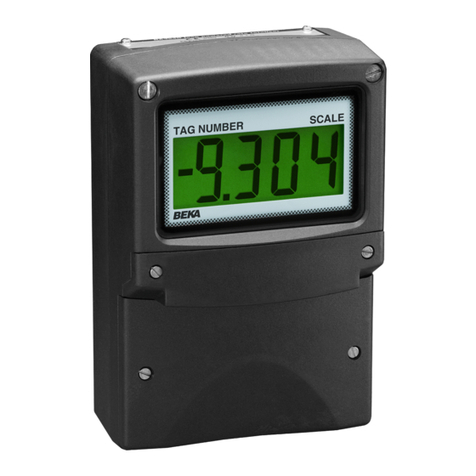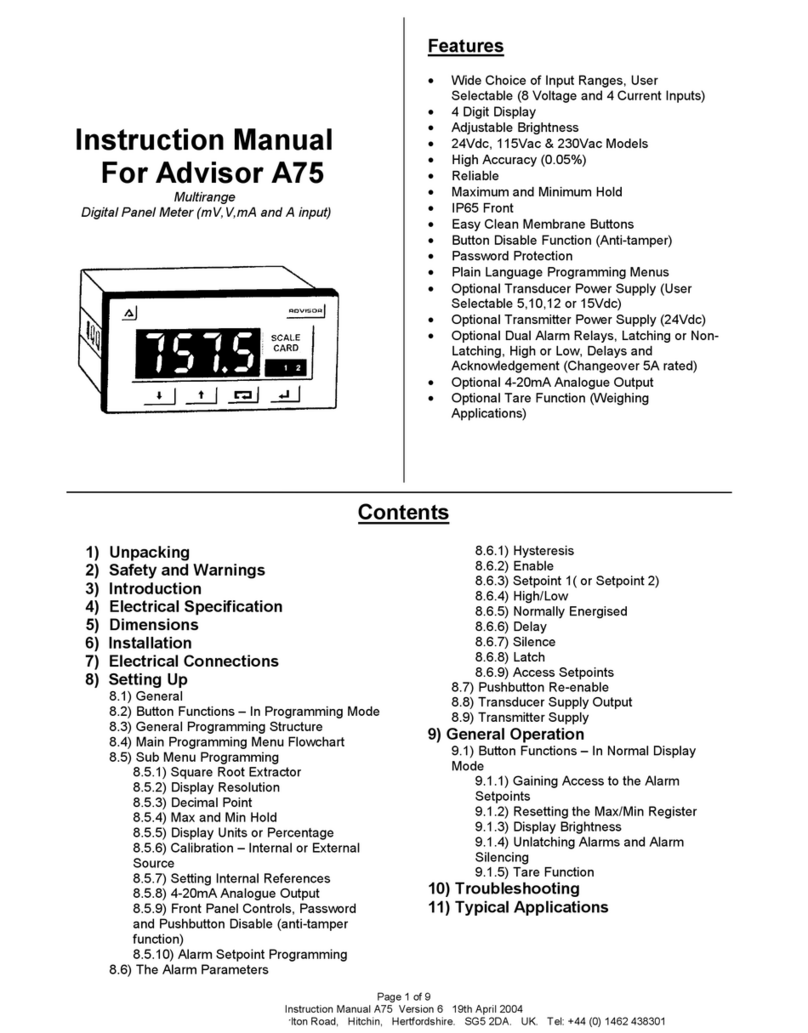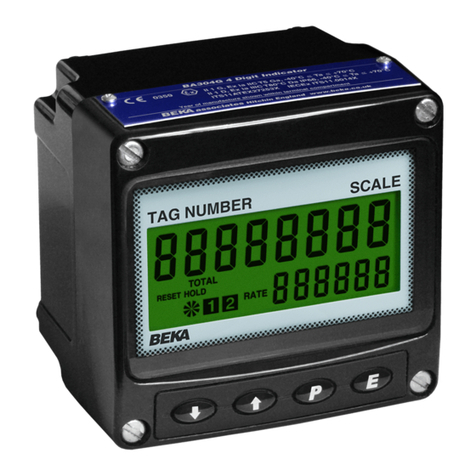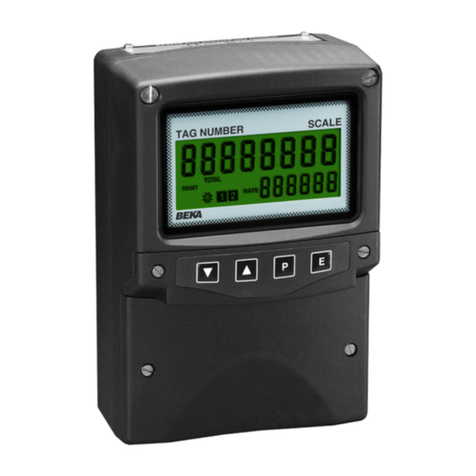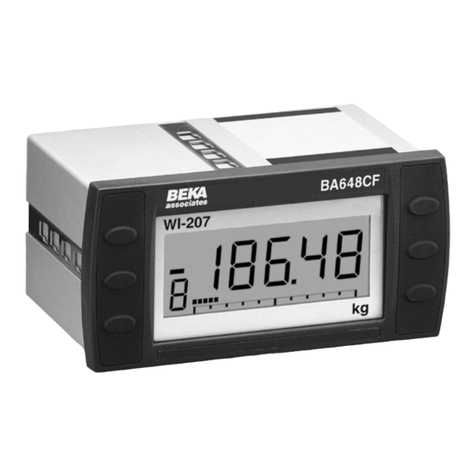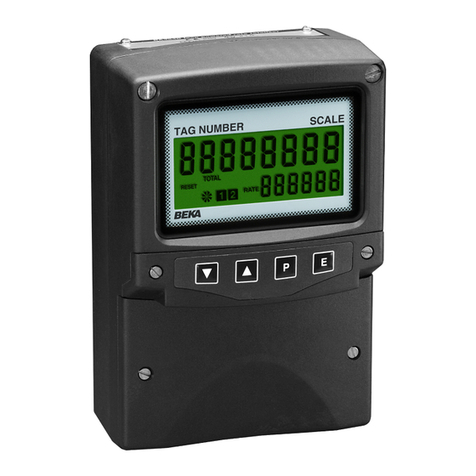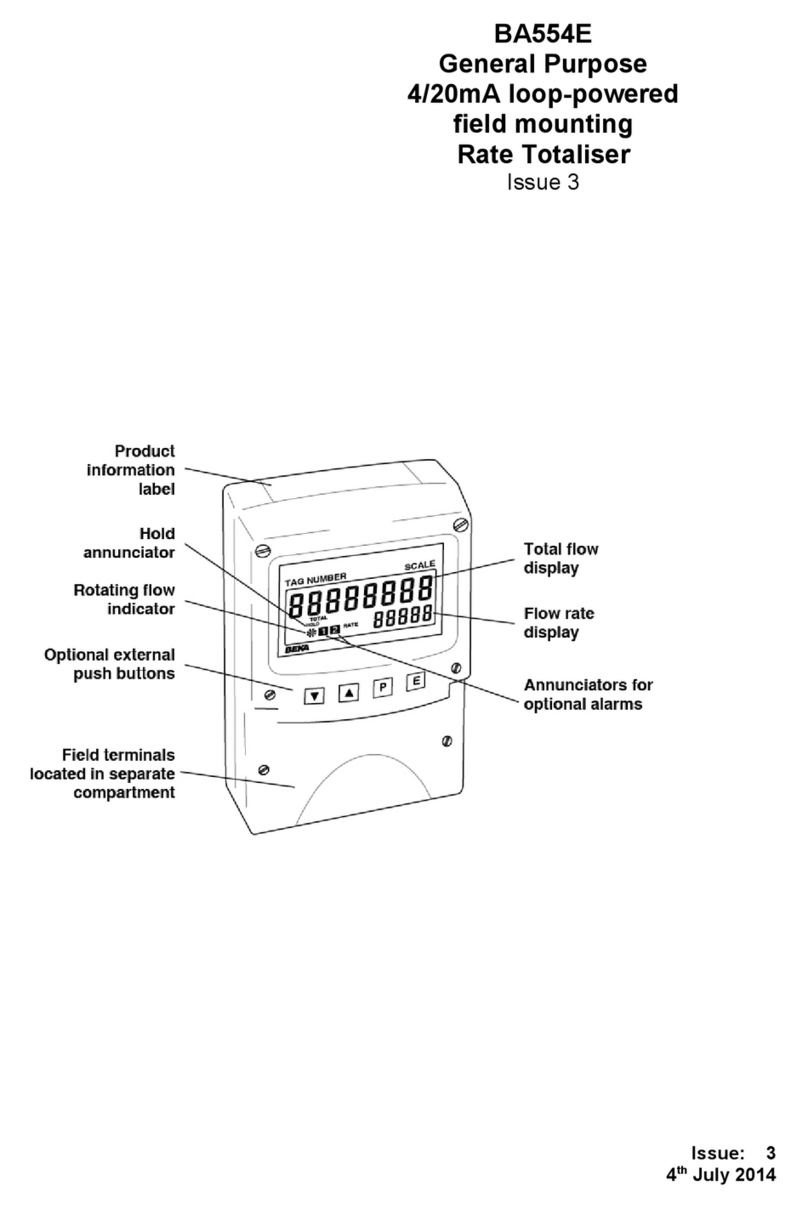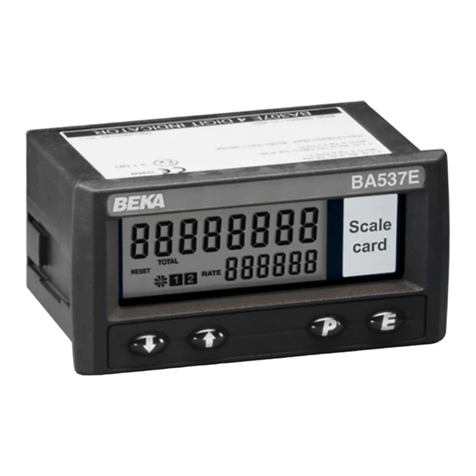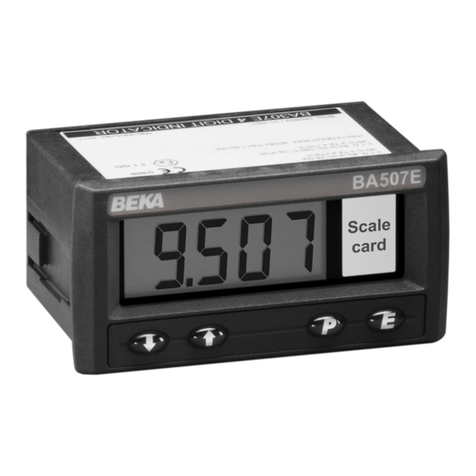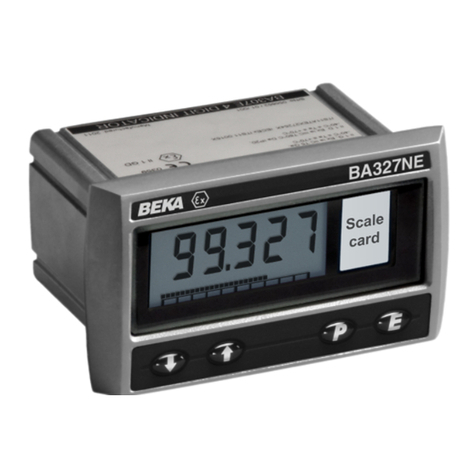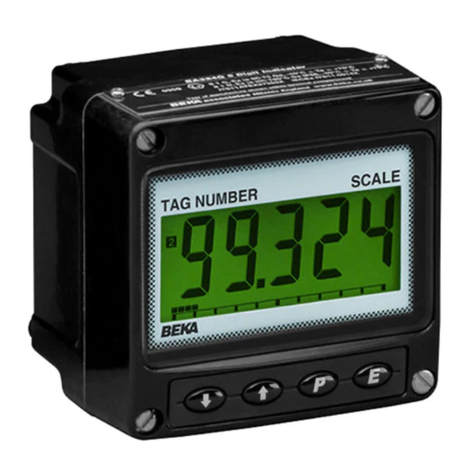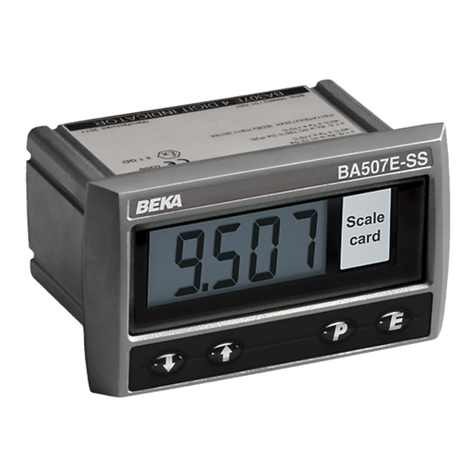
3
1. DESCRIPTION
The BA418CF-F Fieldbus Indicator is an
intrinsically safe, FOUNDATION™ fieldbus ins-
trument that can display one fieldbus process
variable on a five digit LCD and 31 segment
analogue bargraph. The instrument is bus
powered so no additional power supply is required.
Communication Fieldbus Function
Protocol Block
FOUNDATION™ fieldbus Input Selector (1 x IS)
The Device Description files may be downloaded
from The Fieldbus Foundation or the BEKA
associates web site.
Housed in a robust 72 x 144 panel mounting DIN
enclosure, the BA418CF-F fieldbus indicator has
an IP66 front panel and is supplied with a gasket to
seal the joint between the instrument and the
panel.
The instrument is intrinsically safe and has been
certified by European Notified Body Intertek
Testing and Certification Ltd (ITS) to the ATEX
Directive 94/9/EC for use in explosive gas
atmospheres.
The BA418CF-F also has intrinsic safety and
nonincendive FM and cFM Approval allowing
installation in the USA and Canada – see
Appendix 1.
For international applications the BA418CF-F
fieldbus indicator has IECEx intrinsic safety
approval – see Appendix 2.
The instrument’s communication protocol is shown
on the rear of the instrument. The ‘-F’ order code
suffix also indicates the protocol but is not shown
on the instrument certification label.
1.1 Documentation
This instruction manual describes ATEX system
design and installation of the BA418CF-F Fieldbus
Indicator. For commissioning information please
refer to:
FOUNDATION™ fieldbus
Fieldbus Interface Guide
for
Fieldbus Displays and
Fieldbus Indicators
which can be requested via the BEKA web site
www.beka.co.uk
System design information for FM, cFM and IECEx
is shown in separate appendices to this manual.
2. INTRINSIC SAFETY CERTIFICATION
2.1 ATEX certificate
The BA418CF-F has been issued with an EC-Type
Examination Certificate by Notified Body Intertek
Testing and Certification Ltd (ITS) confirming
compliance with the European ATEX Directive
94/9/EC for Group II, Category 1G, gas
atmospheres, Ga Ex ia IIC T4. The instrument
bears the Community Mark and, subject to local
codes of practice, may be installed in any of the
European Economic Area (EEA) member
countries. ATEX certificates are also acceptable
for installations in Switzerland.
This manual describes ATEX installations in
explosive gas atmospheres that conform with
EN 60079:Part14 Electrical Installation in
Hazardous Areas. When designing systems for
installation outside the UK, the local Code of
Practice should be consulted.
2.2 Zones, gas groups and T rating
The BA418CF-F has been issued with EC Type
Examination certificate ITS06ATEX25314/2X
confirming that it complies with the requirements
for Group II Category 1G Ga Ex ia IIC T4 (Tamb
–40 to 70oC) specified in the ATEX Directive.
When connected to a suitable certified system the
BA418CF-F may be installed in:
Zone 0 explosive gas air mixture
continuously present. Note:
Special conditions for safe use
apply see section 4.1
Zone 1 explosive gas air mixture
likely to occur in normal
operation.
Zone 2 explosive gas air mixture not
likely to occur, and if it does will
only exist for a short time.
Be used with gases in groups:
Group A propane
Group B ethylene
Group C hydrogen
Having a temperature classification of:
T1 450oC
T2 300oC
T3 200oC
T4 135oC
At an ambient temperature between –40 and
+70oC.
Note: the guaranteed operating temperature range
of the Fieldbus Indicator is –20 to +70oC.
